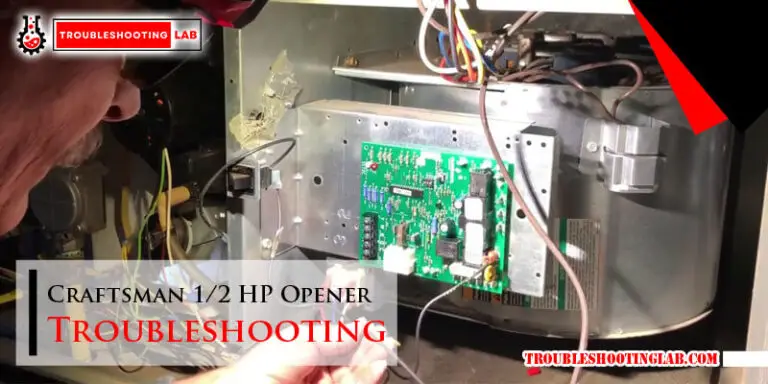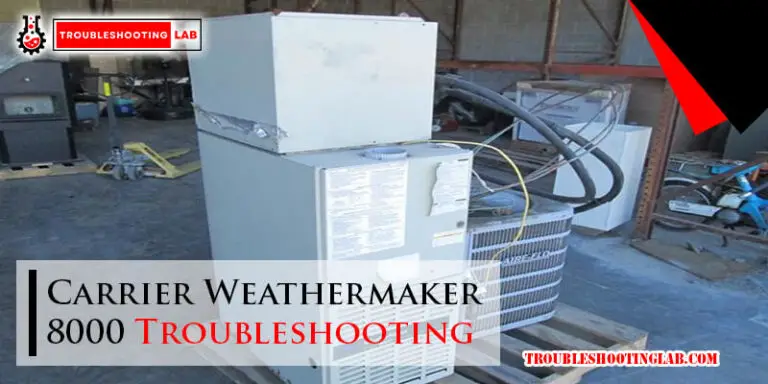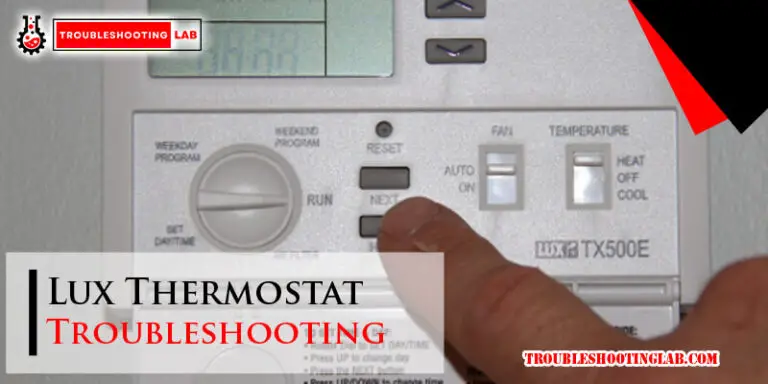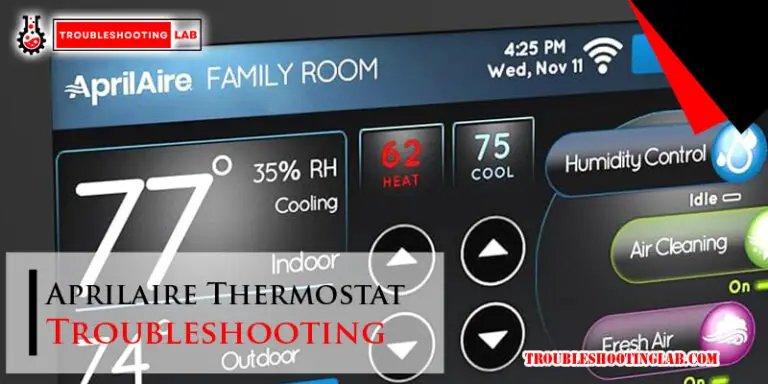Comfortmaker Furnace Troubleshooting: Quick Fixes & Solutions
Is your Comfortmaker furnace acting up? Don’t worry, you’re not alone.
Many homeowners encounter issues with their heating systems, especially during the colder months. Understanding the common problems and their fixes can save you time and money. This guide will help you troubleshoot your Comfortmaker furnace, ensuring it runs smoothly when you need it most.
From identifying error codes to checking the thermostat, we’ll cover essential tips to keep your furnace in top shape. Get ready to tackle those furnace issues and keep your home warm and cozy.
Common Furnace Issues
Furnaces are crucial for keeping homes warm during the cold months. Sometimes, they face issues that require troubleshooting. Understanding common furnace problems can help in resolving them quickly. Below are some common issues with Comfortmaker furnaces and tips on how to fix them.
No Heat
If your Comfortmaker furnace is producing no heat, the problem can stem from several sources. Here are a few key areas to check:
- Thermostat Settings: Ensure the thermostat is set to ‘heat’ mode and the temperature is set higher than the current room temperature.
- Power Supply: Check if the furnace is receiving power. Verify that the circuit breaker is on and the furnace switch is in the ‘on’ position.
- Pilot Light: For older models, confirm that the pilot light is lit. If it’s out, follow the manufacturer’s instructions to relight it.
- Gas Supply: Ensure the gas valve is open. If it’s closed, the furnace won’t receive the necessary fuel to produce heat.
Insufficient Heat
Insufficient heat from your Comfortmaker furnace can make your home uncomfortable. Here are some common reasons and solutions:
- Clogged Air Filter: A dirty air filter restricts airflow, reducing heating efficiency. Replace the filter every 1-3 months.
- Blocked Vents: Ensure all vents and registers are open and not obstructed by furniture or other objects.
- Dirty Burners: Burners can accumulate dirt and debris over time, affecting performance. Cleaning them can restore proper heating.
- Thermostat Issues: A malfunctioning thermostat can cause improper temperature regulation. Consider recalibrating or replacing it if necessary.
Addressing these issues can significantly improve your furnace’s performance and ensure a warm, comfortable home.
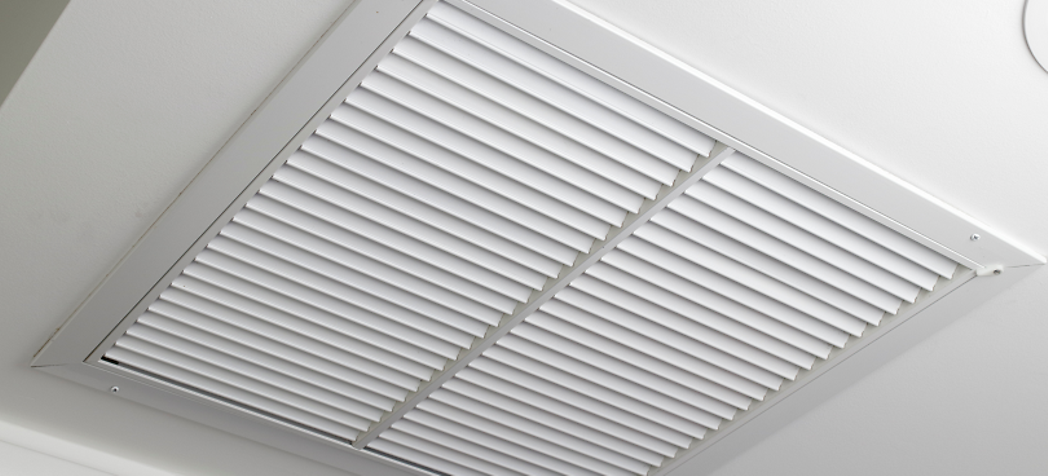
Credit: www.partstown.com
Initial Checks
When your Comfortmaker furnace isn’t working, start with some initial checks. These checks can often solve simple issues without needing professional help. Below are some key areas to inspect.
Power Supply
First, ensure your furnace is getting power. A tripped breaker or a blown fuse can be the problem. Check the electrical panel and reset any tripped breakers. If a fuse is blown, replace it with a new one of the same rating.
- Check the furnace switch. This switch is usually on the side of the furnace. Make sure it’s in the “On” position.
- Inspect the power cord. Look for any visible damage. If the cord is damaged, it may need replacement.
Thermostat Settings
Next, check your thermostat settings. Sometimes, the issue is as simple as incorrect settings.
- Ensure the thermostat is set to “Heat”.
- Set the temperature at least 5 degrees higher than the current room temperature.
- Replace the batteries if the thermostat is battery-operated.
- Verify the thermostat is not in “Fan” or “Cool” mode.
If the thermostat is programmable, confirm the schedule settings. Incorrect settings can prevent your furnace from turning on.
Pilot Light Problems
The pilot light is a small flame that ignites the gas in your Comfortmaker furnace. If the pilot light goes out, your furnace won’t produce heat. Understanding common pilot light issues can help you troubleshoot and resolve them quickly.
Relighting The Pilot
If your pilot light is out, follow these steps to relight it:
- Turn off the gas valve and wait five minutes to clear any gas.
- Locate the pilot light assembly. This is usually near the furnace’s bottom.
- Turn the gas valve to the ‘pilot’ position and press the reset button.
- Use a long lighter to ignite the pilot while holding the reset button.
- Release the reset button after 30 seconds and turn the gas valve to ‘on’.
If the pilot light doesn’t stay lit, you may have other issues.
Pilot Light Won’t Stay Lit
If the pilot light won’t stay lit, several factors could be at play:
- Dirty Pilot Orifice: Dirt can clog the pilot orifice, preventing the flame. Clean it with a needle or compressed air.
- Thermocouple Issues: The thermocouple might be faulty. This device senses the pilot light and signals the gas valve. Replace it if necessary.
- Drafts: Strong drafts can blow out the pilot light. Ensure the area around the furnace is free from drafts.
- Gas Pressure: Low gas pressure can cause pilot light problems. Contact your gas supplier if you suspect this issue.
Addressing these issues can help keep your Comfortmaker furnace running smoothly.

Credit: www.doityourself.com
Ignition Issues
Experiencing ignition issues with your Comfortmaker furnace can be frustrating. Understanding the specific type of ignition problem can help you diagnose and fix it. Ignition issues usually stem from problems with the electronic ignition or intermittent ignition systems.
Electronic Ignition
Electronic ignition systems are common in modern furnaces. They are more efficient than older pilot light systems. If your furnace isn’t igniting, the issue might be with the electronic ignition.
Here are some common causes and solutions:
- Power Supply: Ensure the furnace is plugged in and the circuit breaker is not tripped.
- Igniter: Check if the igniter is cracked or damaged. Replace if necessary.
- Control Board: Inspect the control board for any visible damage or burnt areas.
Perform these checks carefully. Always turn off the power before inspecting any components.
Intermittent Ignition
Intermittent ignition issues can be tricky. The furnace may ignite sometimes but fail other times. This inconsistency can be due to several factors.
Consider these potential problems:
- Flame Sensor: The flame sensor may be dirty. Clean it with a fine cloth.
- Gas Supply: Ensure that the gas valve is open and the supply is consistent.
- Wiring: Loose or damaged wires can cause intermittent ignition. Inspect and secure all connections.
By identifying these common issues, you can address the problem and restore your furnace to proper working order.
Airflow Problems
Dealing with airflow problems in your Comfortmaker furnace can be frustrating. Proper airflow is essential for efficient heating. It ensures your home stays warm and comfortable. Let’s explore common issues that might be affecting your furnace’s airflow.
Blocked Vents
Blocked vents can restrict airflow in your furnace. Furniture, rugs, or other objects can cover vents. Remove any obstructions to ensure proper air circulation. Dust and debris can also block vents. Regularly clean them to keep air flowing smoothly.
Blower Motor Issues
The blower motor is crucial for moving air through your furnace. If it fails, airflow problems occur. A faulty motor may need repair or replacement. Listen for unusual noises like rattling or humming. These can indicate motor issues. Regular maintenance can prevent blower motor problems.
Strange Noises
Strange noises from your Comfortmaker furnace can be troubling. They often signal issues that need attention. Ignoring these sounds can lead to bigger problems. Understanding these noises can help diagnose and fix the issue. Two common strange noises are rattling sounds and squealing noises.
Rattling Sounds
Rattling sounds often mean loose parts in your furnace. Check the access panels first. They may not be secured properly. Tighten any loose screws. If the rattling continues, inspect the blower motor. Loose bolts or screws can cause rattling here too. The heat exchanger can also cause rattling. Cracks or damage in the heat exchanger are serious. Call a professional if you suspect this issue.
Squealing Noises
Squealing noises usually mean a problem with the blower belt. The belt might be loose or worn out. Check the belt for any signs of damage. If the belt is loose, tighten it. Replace the belt if it shows wear. The blower motor bearings can also cause squealing. Lubricate the bearings to stop the noise. If the noise persists, the motor may need replacement. Professional help is advised in this case.
Filter Maintenance
Proper filter maintenance is essential for the efficient operation of your Comfortmaker furnace. Dirty or clogged filters can cause various issues, affecting your furnace’s performance and air quality. Regular filter maintenance ensures your furnace runs smoothly and efficiently, saving you money on energy bills and costly repairs.
Replacing Filters
Replacing filters regularly is crucial for maintaining your furnace’s efficiency. Check your furnace’s user manual to find the recommended replacement frequency. Typically, it’s every 1-3 months. Ensure you have the correct filter size before purchasing a new one. Turn off the furnace and remove the old filter. Insert the new filter, ensuring it is properly aligned with the airflow direction indicated on the filter. Turn the furnace back on and enjoy improved air quality and performance.
Cleaning Filters
Cleaning reusable filters can extend their lifespan and maintain furnace efficiency. First, turn off the furnace. Remove the filter and inspect it for dirt and debris. Use a vacuum cleaner or a brush to remove loose dirt. For a deeper clean, rinse the filter with water and mild soap. Allow the filter to dry completely before reinstalling it. Regular cleaning will help your furnace run smoothly and improve indoor air quality.
Professional Help
When dealing with Comfortmaker furnace issues, professional help may be needed. Complex problems often require expert attention. Technicians have the skills to diagnose and fix issues efficiently.
When To Call A Technician
Some issues need professional help. If your furnace does not turn on, call a technician. Strange noises or persistent cycling also need expert attention. These signs point to deeper issues.
If you smell gas, leave your home and contact a professional. Gas leaks are dangerous and require immediate help. A technician can ensure your safety and fix the problem.
Choosing A Qualified Professional
Find a qualified professional to handle your Comfortmaker furnace. Check for certifications and licenses. Certified technicians have the training to work on your furnace safely.
Read reviews and ask for recommendations. Positive feedback from others can guide your choice. Ensure the technician has experience with Comfortmaker furnaces.
Consider their availability and response time. Quick service can prevent further damage. A reliable technician will offer timely solutions.

Credit: www.youtube.com
Frequently Asked Questions
Why Is My Comfortmaker Furnace Not Heating?
Check if the thermostat is set correctly. Ensure the gas valve is on. Inspect for a tripped breaker.
How Do I Reset My Comfortmaker Furnace?
Locate the reset button on the furnace. Press and hold it for 30 seconds. Release and wait.
Why Is My Furnace Blowing Cold Air?
Check if the thermostat is set to “heat. ” Ensure the furnace filter is clean. Inspect the pilot light.
How Often Should I Replace The Furnace Filter?
Replace the furnace filter every 1-3 months. It depends on usage and filter type. Keep it clean.
What Does A Blinking Light On My Furnace Mean?
A blinking light indicates an error code. Refer to the furnace manual for specific troubleshooting steps.
Conclusion
Troubleshooting a Comfortmaker furnace can be simple with the right steps. Always start by checking basic issues like power and settings. Identify and fix common problems to keep your furnace running smoothly. Regular maintenance prevents many issues before they start.
If problems persist, consult a professional for help. A well-functioning furnace ensures comfort during colder months. Stay warm and save on repair costs by addressing issues early. Keep this guide handy for future furnace troubleshooting.

